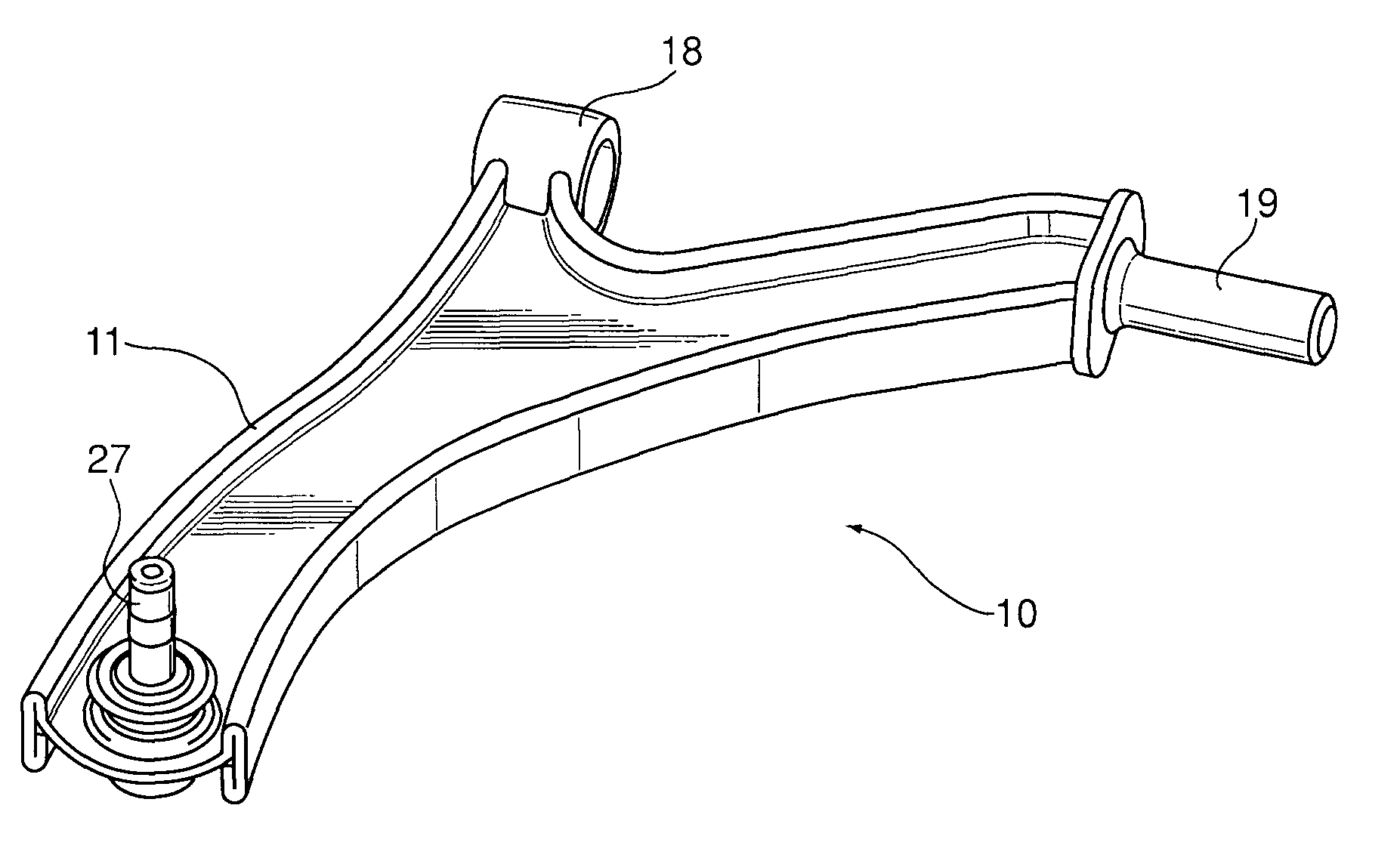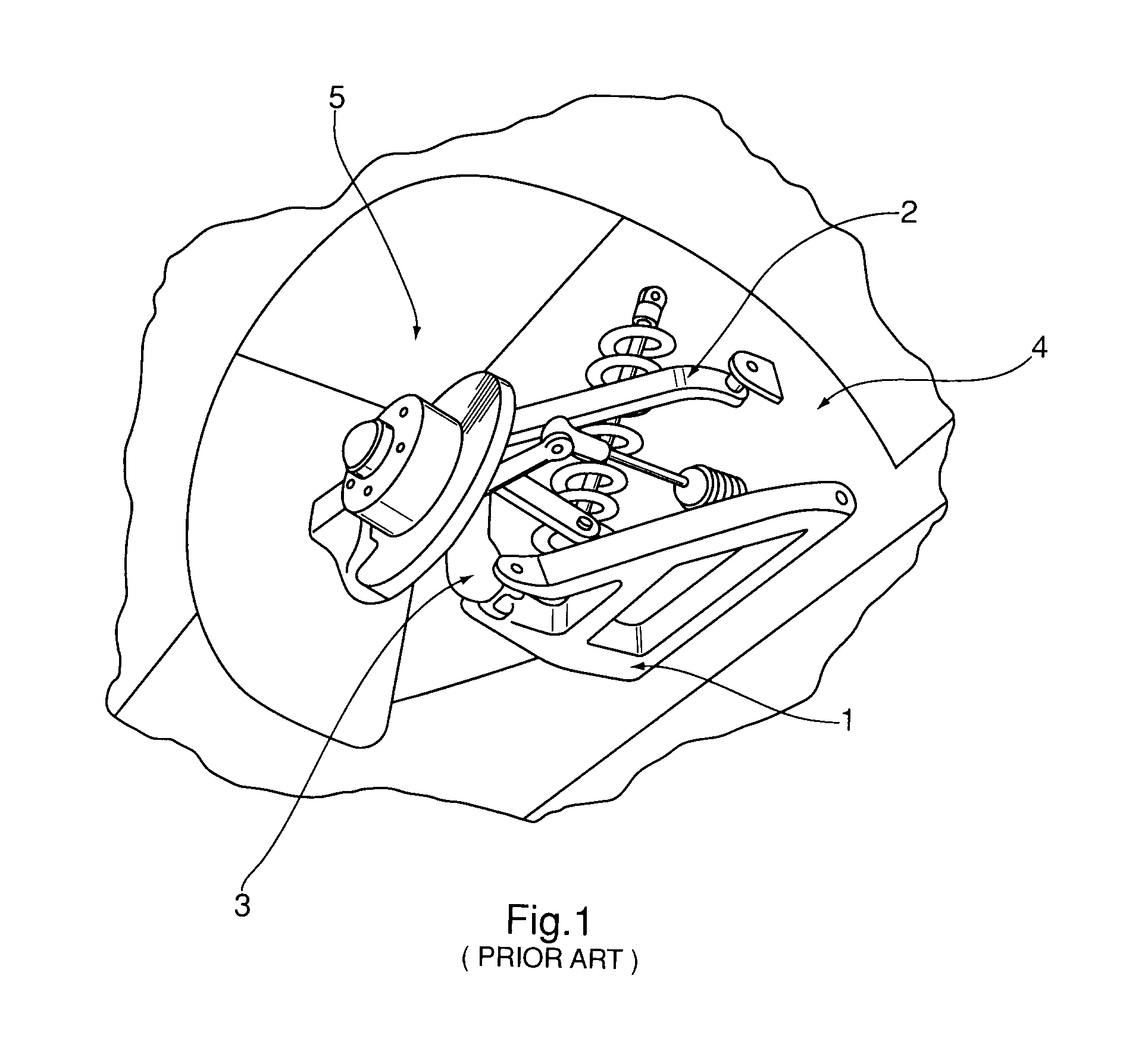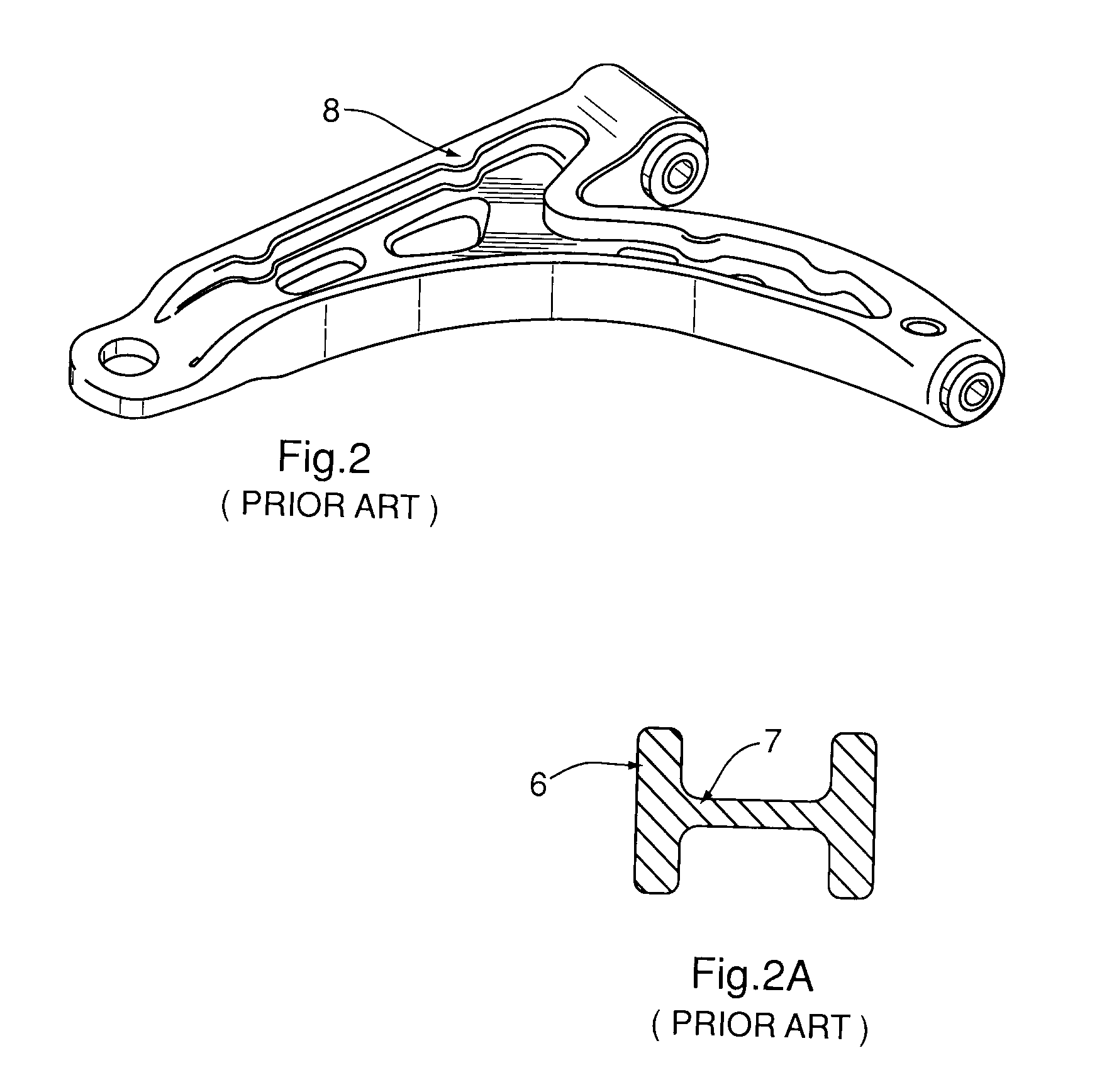Structural i-beam automotive suspension arm
a technology of i-beam and automotive suspension, which is applied in the direction of i-beam suspension arms, resilient suspensions, vehicle components, etc., can solve the problems of reduced strength and stiffness, use of a number of complex manufacturing processes, and non-uniform shape, so as to achieve superior i-beam section and facilitate manufacturing.
- Summary
- Abstract
- Description
- Claims
- Application Information
AI Technical Summary
Benefits of technology
Problems solved by technology
Method used
Image
Examples
Embodiment Construction
[0036]Referring to FIGS. 5, 6, 7 and 8, a vehicular suspension control arm (10) is substantially constructed from a complex single piece, sheet metal stamped component (11), a round bushing support (18), an in-line pin bushing support (19) and a ball joint (27). The sheet metal stamped component (11) is manufactured by press-forming a uniform thickness, flat sheet of steel, aluminum or other suitable metal (e.g. titanium, tungsten, etc.) or alloy into a required plan view shape which is dictated by the vehicle's suspension geometry requirements. Additionally, the stamped component is configured, during the press-forming process, with a single material thickness web portion (12) and two flange portions (13) at opposite sides of the central web portion (12). Each flange portion (13) includes an upstanding closed section (14) and downstanding closed section (15) formed with a continuous returned segment (16) that is double returned onto one of the closed sections so that the trim end (...
PUM
| Property | Measurement | Unit |
|---|---|---|
| thickness | aaaaa | aaaaa |
| distance | aaaaa | aaaaa |
| stiffness | aaaaa | aaaaa |
Abstract
Description
Claims
Application Information
 Login to View More
Login to View More - R&D
- Intellectual Property
- Life Sciences
- Materials
- Tech Scout
- Unparalleled Data Quality
- Higher Quality Content
- 60% Fewer Hallucinations
Browse by: Latest US Patents, China's latest patents, Technical Efficacy Thesaurus, Application Domain, Technology Topic, Popular Technical Reports.
© 2025 PatSnap. All rights reserved.Legal|Privacy policy|Modern Slavery Act Transparency Statement|Sitemap|About US| Contact US: help@patsnap.com



